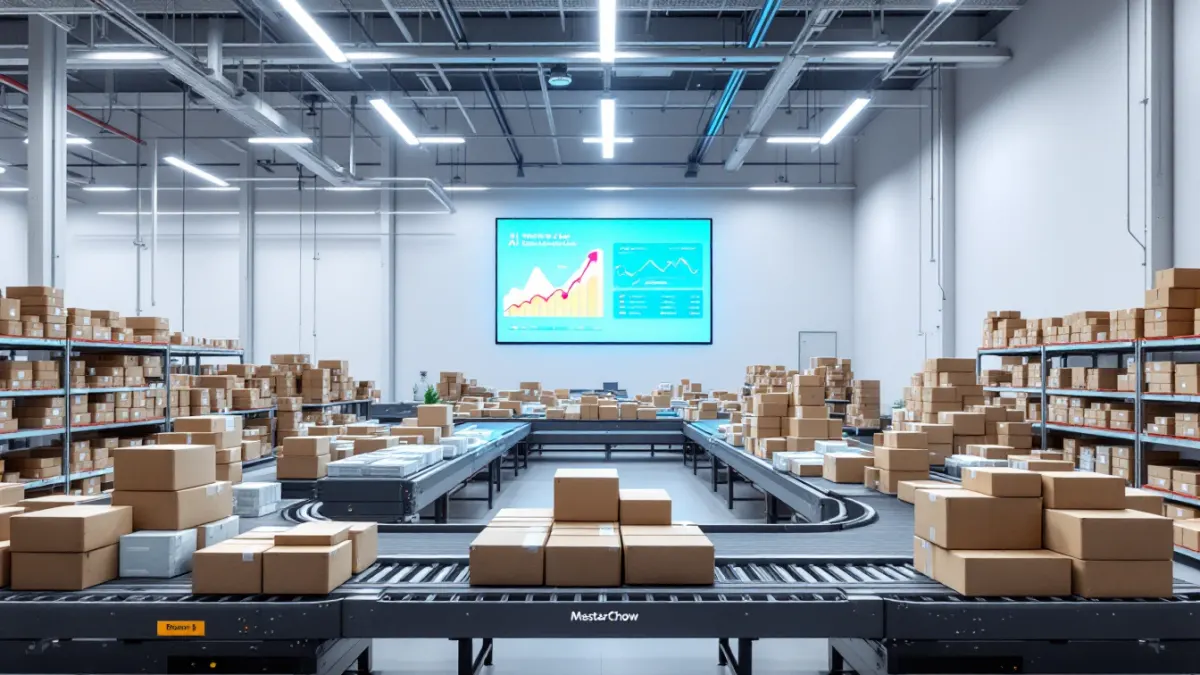How India’s MasterChow Triples Revenue by 2026 with System Leverage

India’s direct-to-consumer food brand MasterChow projects a dramatic revenue jump to INR 72 crore by fiscal 2026, nearly tripling its current numbers. This target signals more than growth—it highlights a leverage-driven model tuned for rapid scale in India’s fragmented food market.
Beyond mere expansion, MasterChow is unlocking leverage through end-to-end automation and systemized supply chains, turning operational complexity into competitive advantage. “Scalability is no longer about more resources but smarter system design,” says analysts tracking India’s fast-growing D2C ecosystem.
Why Growth Isn’t Just Top-Line Expansion
Conventional wisdom treats rapid revenue growth as a product of heavy marketing spend or distribution muscle. But MasterChow challenges this by investing in digital process automation and vendor integration early, which lowers incremental costs with each new order. For Indian food startups, the real constraint isn’t demand but managing perishable inventory efficiently.
Unlike global giants who lean on massive warehousing or cold chains, MasterChow leverages agile micro-warehouses and AI-driven demand forecasting. This is a form of business process automation that positions the brand above peers unable to handle scale without ballooning overhead.
MasterChow’s Constraint Repositioning in a Challenging Market
While Indian incumbents like Swiggy and Zomato dominate food delivery logistics, their models don’t translate well to D2C meal kits or ready-to-cook goods—MasterChow’s sweet spot. Instead of conquering delivery, they control manufacturing-to-customer flow with fewer intermediaries, minimizing wastage and operational drag.
This constraint repositioning mirrors systems thinking, optimizing not just one but multiple weak links in the value chain. Reliance on proprietary vendor APIs and automated inventory updates slashes response times from hours to minutes.
Forward Leverage: What This Means for India’s Food Tech Scene
The updated constraint MasterChow identifies is system agility at scale, not pure marketing firepower. Operators in India should focus on precise vendor partnerships and automation platforms to replicate this advantage. As urbanization and e-commerce penetration deepen, brands that embed resource optimization will leapfrog slow incumbents.
Regions with fragmented supply chains like India can harness this model to convert complexity into leverage, a strategy not easily copied by players tuned for volume over velocity. “Operational velocity combined with systemic automation is the new moat in food D2C,” sums up industry investors.
Related Tools & Resources
To effectively implement system leverage and automation like MasterChow, businesses need clear, scalable processes. Platforms like Copla help teams create and manage standard operating procedures that drive operational consistency and agility—key drivers for growth in complex markets. Learn more about Copla →
Full Transparency: Some links in this article are affiliate partnerships. If you find value in the tools we recommend and decide to try them, we may earn a commission at no extra cost to you. We only recommend tools that align with the strategic thinking we share here. Think of it as supporting independent business analysis while discovering leverage in your own operations.
Frequently Asked Questions
How can direct-to-consumer food brands like MasterChow achieve rapid revenue growth?
Brands like MasterChow achieve rapid revenue growth by implementing system leverage through end-to-end automation and systemized supply chains, enabling scalability without proportional increases in resources. For example, MasterChow projects nearly tripling its revenue to INR 72 crore by fiscal 2026 by optimizing operations and lowering incremental costs with each new order.
What operational strategies help food startups manage perishable inventory efficiently?
Food startups can manage perishable inventory efficiently by using agile micro-warehouses combined with AI-driven demand forecasting, as MasterChow does. This approach reduces wastage and operational drag by optimizing inventory flow and minimizing the need for large cold storage facilities.
In what ways does system automation provide competitive advantages in India’s food market?
System automation offers competitive advantages by turning operational complexity into efficiency gains, such as quicker vendor response times and reduced overhead. MasterChow's use of proprietary vendor APIs and automated inventory updates cuts response times from hours to minutes, allowing scalable growth in fragmented markets.
How does constraint repositioning differ from traditional growth approaches in food tech?
Constraint repositioning focuses on optimizing system agility and multiple weak links in the value chain rather than just marketing spend or distribution scale. MasterChow, unlike incumbents relying on delivery logistics, controls manufacturing-to-customer flow with fewer intermediaries, reducing wastage and operational drag.
Why is marketing spend not the only factor in scaling D2C food brands in India?
Marketing spend alone is insufficient because managing perishable inventory and supply chain complexity are key challenges. MasterChow demonstrates that investing early in digital process automation and vendor integration lowers incremental costs and drives scalable growth beyond just top-line expansion.
What role does resource optimization play in India’s evolving food tech ecosystem?
Resource optimization plays a crucial role by embedding automation and precise vendor partnerships to achieve system agility at scale. This approach helps brands leapfrog slower incumbents by converting supply chain complexity into leverage, as seen with MasterChow's strategy in fragmented Indian markets.
How do micro-warehousing and AI-driven demand forecasting benefit food D2C models?
Micro-warehousing and AI-driven demand forecasting enable food D2C companies to be more agile and reduce wastage by accurately predicting demand and positioning inventory close to consumers. This approach helps to avoid the large fixed costs and inefficiencies of massive warehousing and cold chains.
What is the projected revenue growth for MasterChow by fiscal 2026?
MasterChow projects a revenue jump to INR 72 crore by fiscal 2026, nearly tripling its current numbers through system leverage and operational automation.

